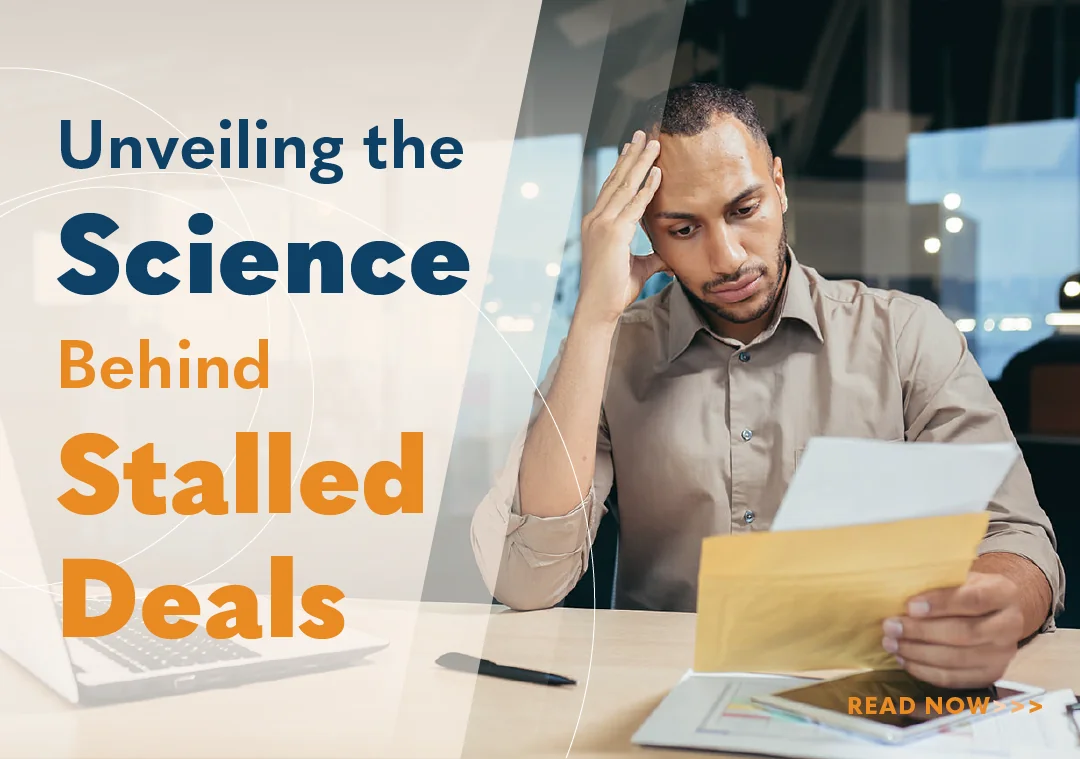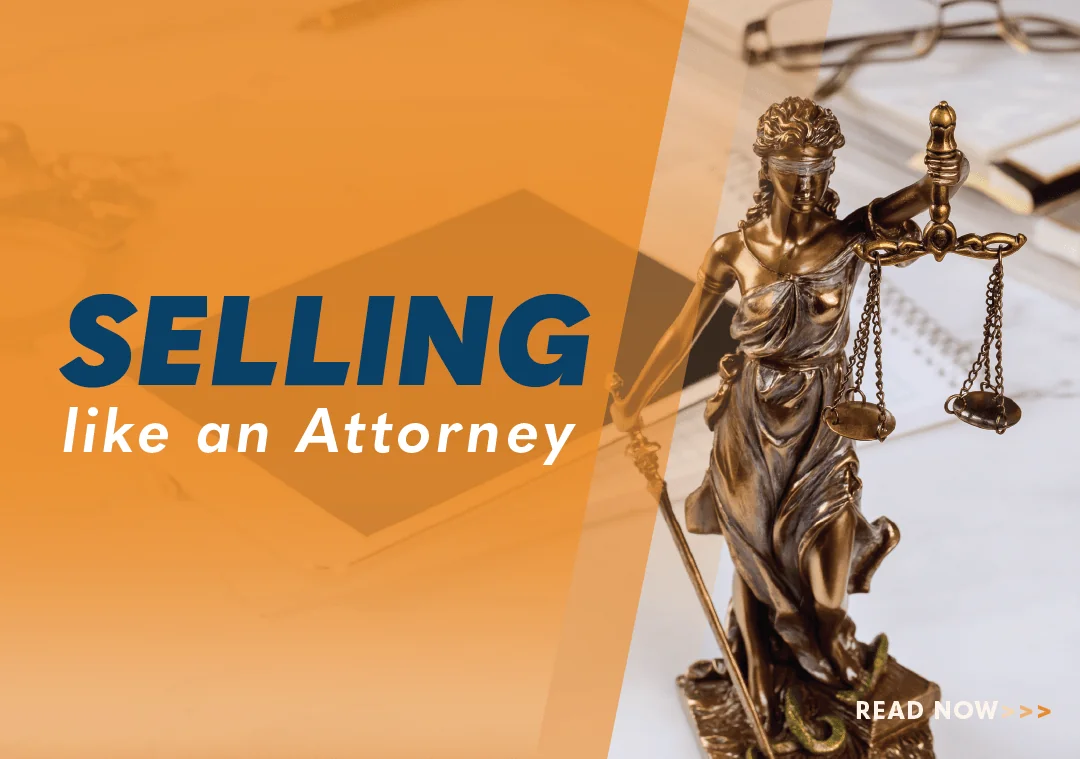6 Ways to Generate Urgency in B2B Sales

We’ve all seen the late-night TV commercials with demonstrative salespeople urging us to ACT NOW! Often, this is combined with a flashing LIMITED TIME OFFER. Like it or not, even skeptics listen. No one wants to miss a deal, and, in sales, time counts.
Of course, B2B selling is different. For one thing, uncertain times mean tighter budgets and more decision makers. Most buyers cannot afford to be impulsive. Also, B2B sellers must guard against negative stereotypes. Today, high-pressure tactics can seem gimmicky and disingenuous. But as trusted advisors, B2B sellers can still generate urgency to help skeptical buyers help themselves.
Yet, according to HubSpot Research, 42 percent of sellers struggle establishing urgency. Clearly, generating urgency is a skill top sellers master. Let’s look at ways B2B sellers can create the urgency that benefits themselves and their clients.
Ask Urgent Questions
To generate urgency, ask urgent questions. This is more than identifying needs and pain points. It’s relating those needs and pain points to immediate consequences. For example:
- How often do you hit your weekly, monthly, and quarterly goals?
- What happens if you do not reach your goals?
- How would solving this challenge now affect others in your organization?
- What happens if you do not solve this problem now?
Regularly missing goals indicates a persistent problem. And persistent problems mean lingering consequences. Eventually, customers must acknowledge the issue will not fix itself. Often, once they verbalize these consequences, they see it’s time to act.
It’s easy to think of consequences in the abstract. Buyers may think falling short of goals is suboptimal, but not catastrophic. However, in B2B, problems rarely exist in a vacuum. They’ve usually not limited to singular departments or small groups. Instead, they are multifaceted and affect team members down the hall and, more importantly, up the stairs.
For every stalled sale, there are a multitude of excuses. It’s the economy. It’s the budget. It’s not the right time. Every buyer has something that gives pause. Therefore, ask about the consequences of inaction. The potential cost of not implementing a solution can be a buyer’s best motivator.
Prospect Theory
A theory of behavioral economics and finance, this idea was developed by Daniel Kahneman and Amos Tversky in 1979. It was instrumental in Kahneman winning the 2002 Nobel Prize in Economics.
Simply put, prospect theory deals with the psychology of decision making. Of course, all buyers assess needs differently. But prospect theory states people are more motivated by what they stand to lose than what they might gain.
Here, one can see how prospect theory generates urgency. For example, framing a solution as loss prevention motivates buyers more than the benefits of fancy features.
Make It Personal
Central to urgency is knowing how problems affect key players, both professionally and personally. Also, the more people affected, the more urgent the need. To make the problem personal, consider the following:
- Know people and relationships
- Align problems with people
- Shorten your sales process
To generate urgency, know key players and their roles, and gauge their individual stakes. In B2B selling, the personal and professional are often intwined. And buyers are motivated more by their personal interests.
Align the problem with the person. For example, show the immediate effect of a Midwest supply chain issue on sales quota. At the same time, demonstrate the effect on the C-suite’s quarterly goals. In B2B, the sales process can be arduous. While this is necessary for relationship building, it doesn’t generate urgency. Once you establish trust, shorten your sales process without cutting corners. Keep it simple and stress the importance of time. As you initially qualified a buyer’s ability to pay, now spark an eagerness to invest. This means highlighting solutions that solve problems and alleviate stress.
Establish Credibility Through Case Studies and Testimonials
Effective sales collateral starts with the collaboration of your sales and marketing teams. Product sheets, blogs, and white papers are effective tools, especially when strategically deployed in the sales process.
Collateral stays with buyers when meetings and calls end. It affects buyers at their most introspective. But creating urgency goes beyond generating interest. It must inspire action. For this, consider the advantages of case studies and testimonials to achieve the following:
- Align buyers in comparable industries
- Solve similar problems
- Highlight achievement
- Generate enthusiasm
Case studies detail previous success using hard data. In showcasing similar companies and comparable problems, they illustrate results, such as ROI. This inspires buyers to want the same, as soon as possible.
Testimonials from satisfied customers are a powerful motivator. Enthusiastic endorsements of your company, product, or service are the ultimate social proof. And buyers will want in. Written testimonials are fine. However, video lets customers see for themselves the elation and exhilaration of achievement, exactly what apprehensive buyers need.
Emphasize Immediate Value
Of course, all sales interactions are unique. Buyers may have the same needs as others. And sellers may have the same or similar products as their competitors. But in each, priorities are different. The sale depends on the perceived value received. To emphasize immediate value, consider the following:
- Tie features to instant benefits
- Tailor solutions
- Offer promotions
Features are the characteristics of a product or service. Benefits are what the customer receives. Sellers should not assume buyers will translate features into benefits or see the need to act. Instead, show how a product’s features provide immediate benefit or alleviate a persistent concern.
Tailored solutions also generate urgency. These can be a mix-and-match of existing favorites or something new. But contrast your solution with a solution and show how yours offers immediate results. This can shorten the buying process by reducing debate and inspiring action.
Special discounts, one-time-offers, and other time-sensitive promotions can be great incentives to create urgency. Of course, avoid the hard sell. Introduce these informally. Rather than “If you act now, you’ll receive,” casually mention a summer special. This can include free upgrades or longer warranties.
Gain Commitment Faster
It can be easy to mistake urgency for rushing. This is doomed to fail. To generate urgency, sellers build on their established trust and use it to gain commitment quicker. Consider these tips:
- Know when to close
- Advocate for your solution
- Set a plan of action
In B2B, customers rarely close themselves. Most are in no hurry. In fact, some think longer processes mean better deals and terms. Therefore, if you wait for customers to announce readiness, you’ll lose opportunities. Instead, know when to close. Look for signs of excitement and enthusiasm.
When sellers have gained trust, they earn the right to advocate for their solutions. Confidently state your support and the benefits customers can expect. For example, “I think moving forward with this solution will increase productivity and boost your bottom line. I am very excited to get started.”
In addition, maintain momentum. Enthusiasm is infectious. Often, when you project it, customers follow. Quickly set a plan of action. This should include responsibilities and timeframes, the sooner the better.
In gaining trust, uncovering needs, and building relationships, B2B selling can be time-consuming. This may make generating urgency feel like heresy, a salesy relic of bygone days and tired stereotypes. However, as trusted advisors, sellers help buyers help themselves. A little urgency often saves time, money, and resources over the long term. We hope these tips help sellers generate the urgency to benefit themselves and their buyers.

- Account Planning (16)
- Awards (42)
- Client Testimonial (37)
- Personal Branding (21)
- Podcast (12)
- Research (77)
- Sales Career Development (90)
- Sales Coaching (165)
- Sales Consulting (141)
- Sales Culture (181)
- Sales Enablement (380)
- Sales Leadership (112)
- Sales Management (268)
- Sales Negotiation (11)
- Sales Prospecting (136)
- Sales Role-Playing (19)
- Sales Training (242)
- Selling Strategies (279)
- Soft Skills (78)
- Talent Management (101)
- Trusted Advisor (29)
- Virtual Selling (57)
- Webinar (13)




























